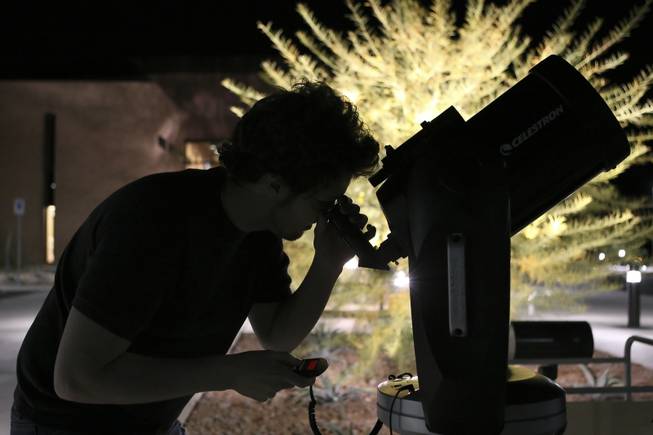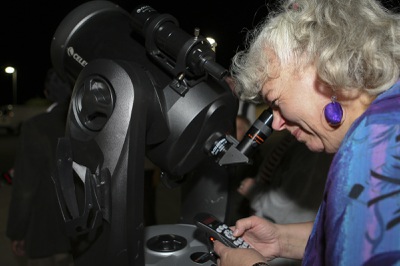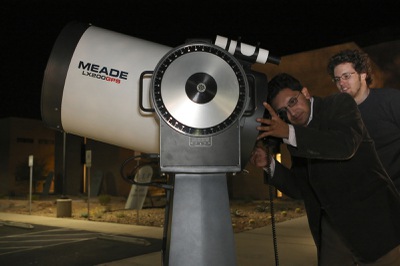
Mona Shield Payne / Special to the Home News
Through the darkness of the night, senior Matt Mitchell searches for Markab, the southwestern-most star in the constellation Pegasus, while aligning the 8-inch Celestron reflector telescope during astronomy class at Nevada State College.
Wednesday, Oct. 29, 2008 | midnight
Related link
Peering into the clear night sky enveloping the Nevada State campus, students detected a fuzzy shape, larger than the moon but fainter. Their high-powered telescopes had zeroed in on the Andromeda Galaxy, with its hazy 2.2 million-year-old glow.
Astronomy students now have access to two 16-inch diameter Celestron telescopes and a number of smaller models capable of finding thousands of objects with satellite technology. Upon being calibrated, students need only to enter a name like "Orion Nebula" for the telescope to automatically point them in the right direction.
"It makes it possible to look at things you might miss," Physical Sciences Chair Sandip Thanki said. "Technology has changed so much in astronomy. It was not possible 10 years ago what we are doing now."
The telescopes are capable of doing more than just focusing the eye.
The previous week, students snapped detailed photos of the moon with the 16-inch telescope, and back in the classroom identified its mountain ranges and craters.
"It was amazing," student Linda Kile said. "We could see them really bright and clear."
Rosita Schuler, a 26-year-old psychology major, grew enthralled, as well.
For her, the most striking scenes involved viewing the different-colored moons of Jupiter.
"You can see stars with your naked eye," she said. "But with telescopes you're seeing them as they really are."
Near the end of class, the 16-inch telescope was wheeled out onto the sidewalk, where students peered up at Jupiter. The telescope was so large that students stood on benches to peer through it.
Thanki said most schools, like UNLV and CSN, have observatories for their large telescopes. Yet his class is making do with the addition of wheels to the telescope's base.
For 25-year-old English major Matt Mitchell the telescope has not only meant a more interesting class; it has also served as something of a status symbol.
"Having something that big doesn't make us feel like a second-rate school," he said. "It's like we're getting the education we're supposed to be getting.
Dave Clark can be reached at 990-2677 or [email protected].



Join the Discussion:
Check this out for a full explanation of our conversion to the LiveFyre commenting system and instructions on how to sign up for an account.
Full comments policy